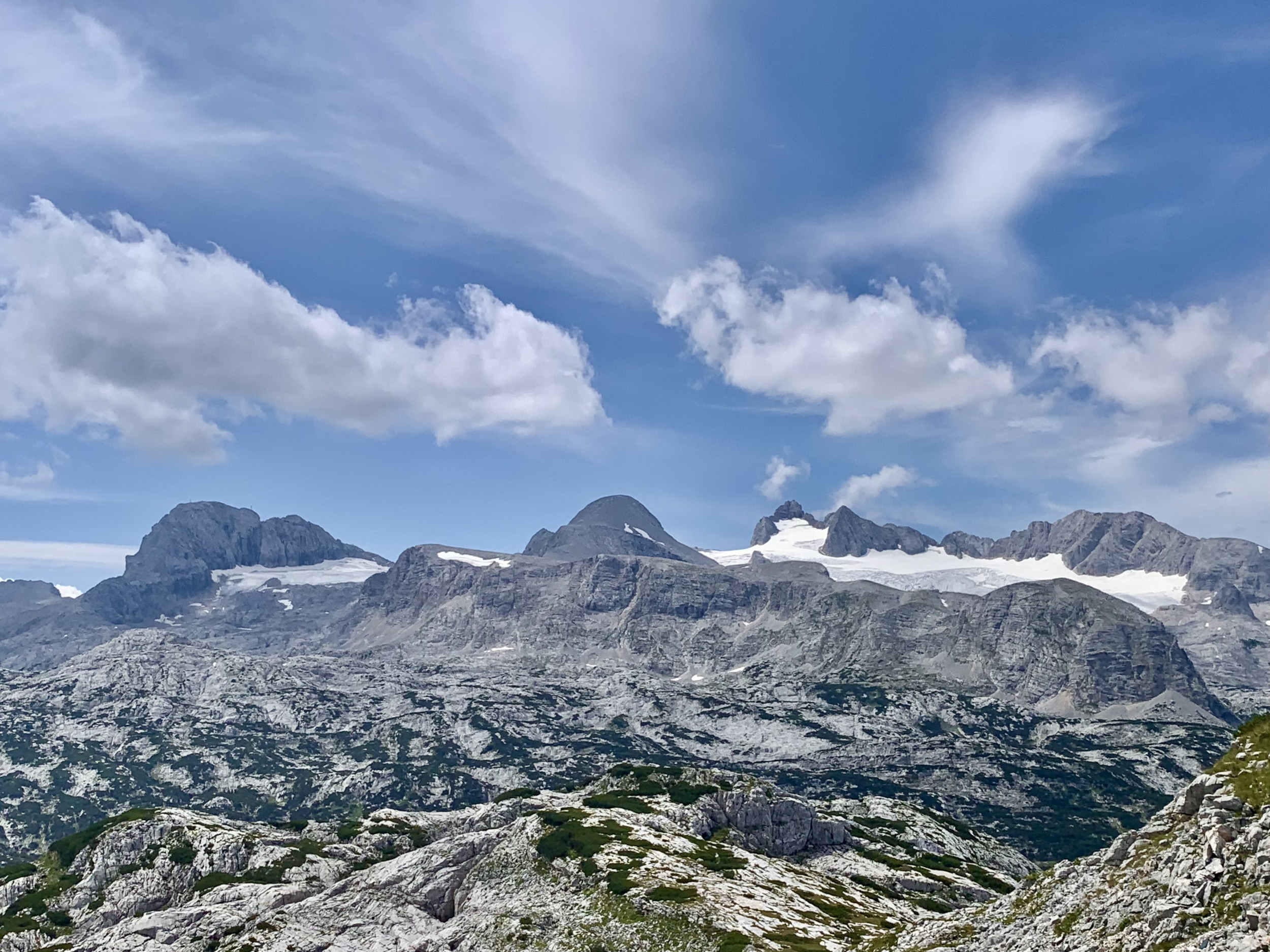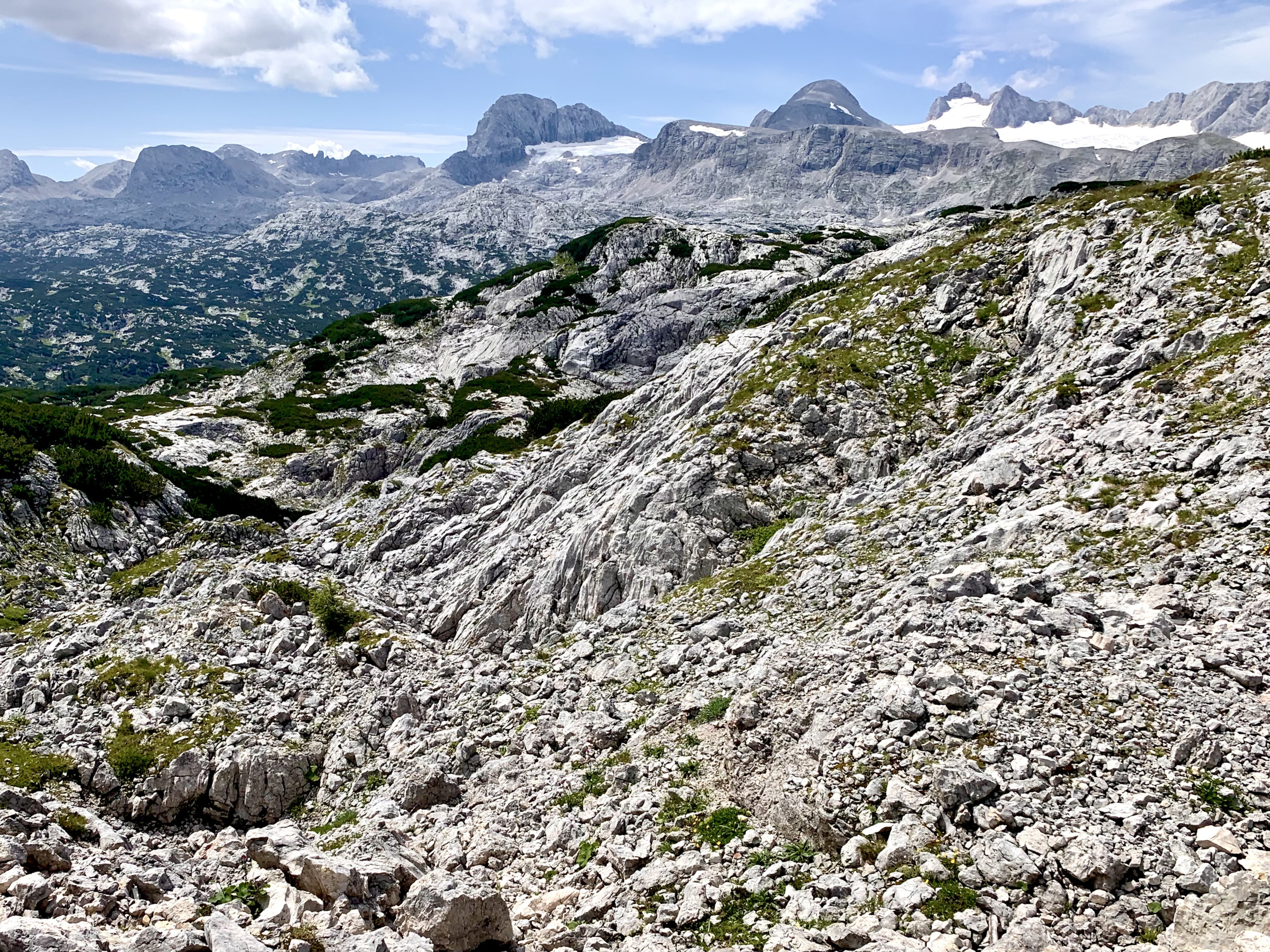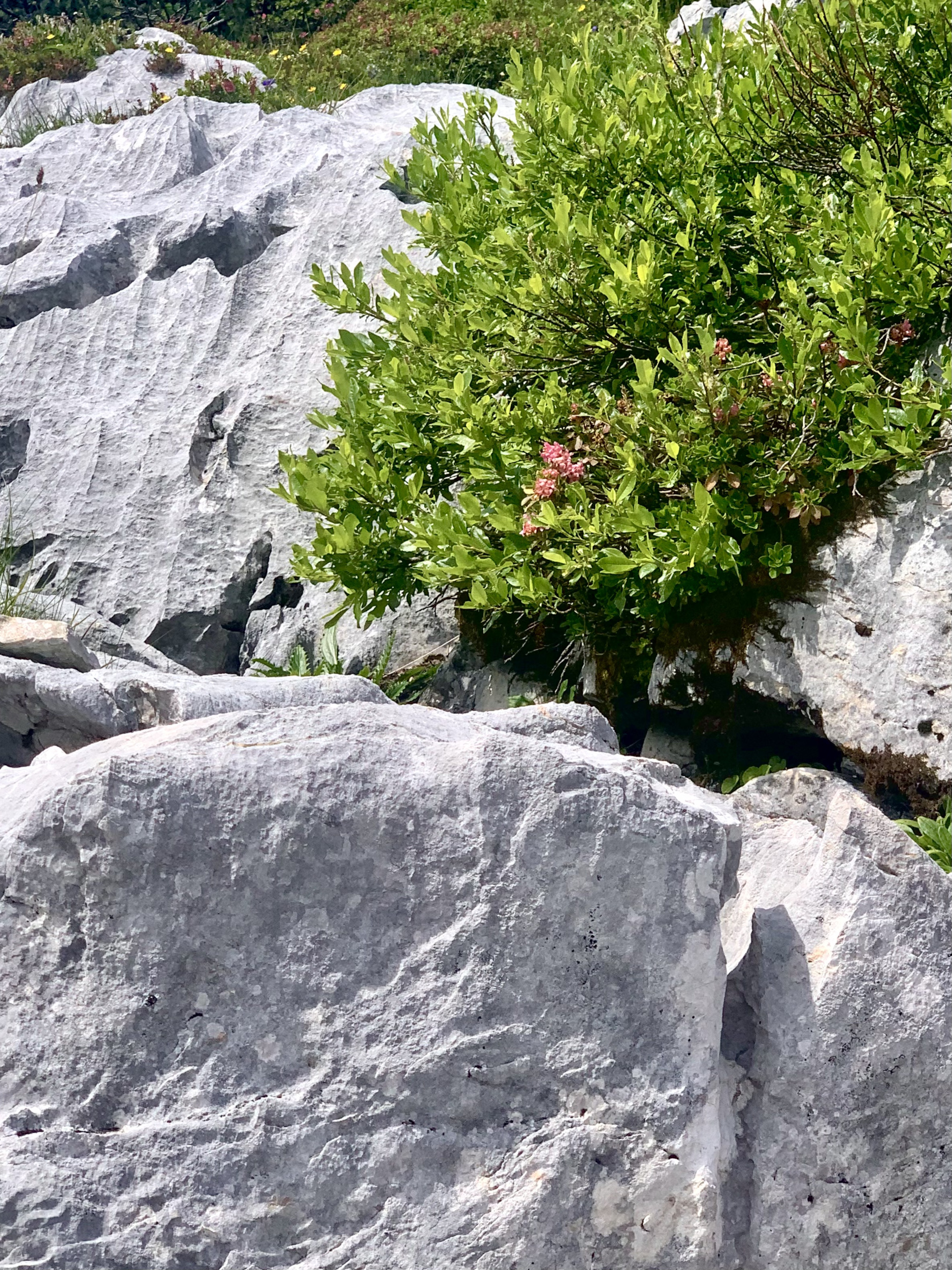Karst Hiking Trail on the Dachstein Massive
The High Dachstein (2,995 m), with the shape of a double peak, rises high between Ramsau in Styria and Hallstatt in Upper Austria. The Hallstatt Glacier flows from the Dachstein massif towards Hallstatt. The Dachstein massif is part of the Northern Limestone Alps, which lie north of the Central Alps. The Central Alps, which mainly consist of gneiss and crystalline slate, are separated from the Limestone Alps by the rivers Inn, Salzach and Enns. Dachstein limestone consists of fine-grained, light-colored banked layers on steep, interlocking plateaus.
From the mountain station of the Dachstein-Krippenstein cable car 2, a karst hiking trail leads through the limestone Dachstein massive that is drained by water and bare on the surface to the Heilbronner Kreuz, 3 km away. The geological phenomenon Karst is named after a landscape in Slovenia and in bordering Italy above the Bay of Trieste, which was referred to as Karst.
In this Slovenian region, the geological basis of a karst landscape was researched for the first time by scientists from the Habsburg monarchy. As a result, the surveyors and travelers there adopted the term karst. The term karst, which describes a stony ground, subsequently has been used widely in all languages since the 1850s.
Alpine flowers can be found on the verge of the karst hiking trail. For example alpine auricle, saxifrage, galaxy rose, clusius primrose, alpine dandelion, Ennstaler silver mantle, dwarf primrose, lime cushion carnation, lime bell gentian, alpine rose and alpine sun rose. The yellow blooming alpine sun rose grows on lime-rich, alpine meadows in crevices up to heights of 2500 meters. The lime bell gentian has a single blue bell flower on a short stem.
The ciliated alpine rose, rhododendron hirsutum, occurs in the Northern Limestone Alps. The ciliated alpine rose is an evergreen shrub with a strongly bushy growth. The flowers are five-fold with a double flower envelope. The bright red crown is bell-shaped and funnel-shaped, provided with glandular scales on the outside and hairy on the inside.
Alpine or mountain dandelion, Leontodon montanus, is a typical undemanding limestone rubble plant in the high mountains, which is the first to grow on a vegetation-free, seep-moist soil at high altitudes of the periglacial zone. Periglacial describes a geomorphological process that goes back to the landscape-defining effect of frost.
The cushy lime carnation, Silene acaulis, the stemless cucumber with its small pink flowers, grows in dense cushions on fields of calcareous debris and penetrates deep into the rock with a long root.




